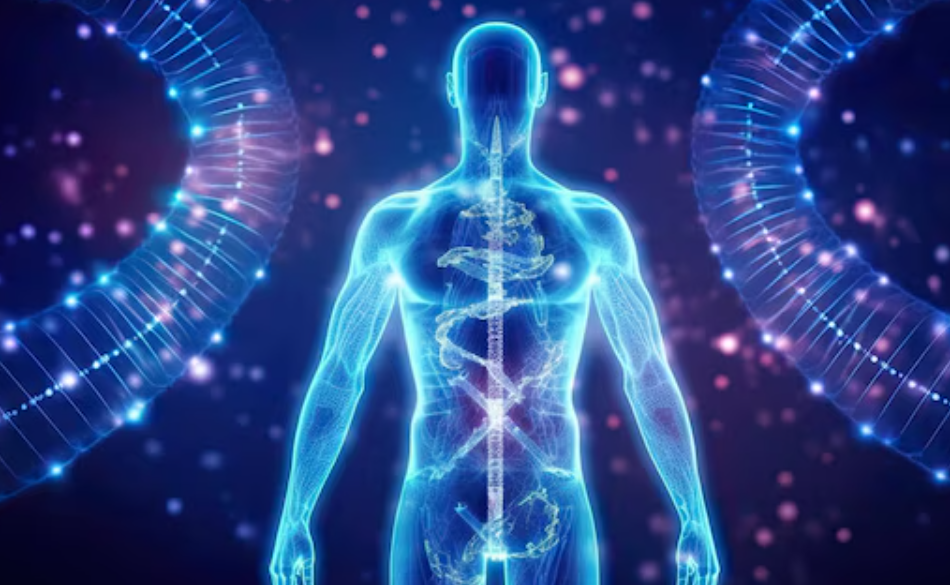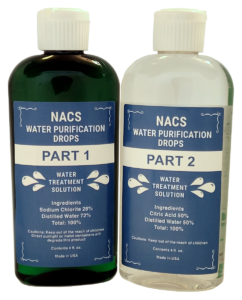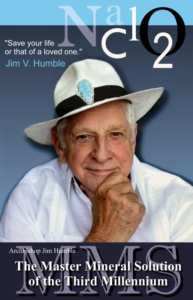In the world of alternative medicine, chlorine dioxide—often referred to as MMS (Miracle Mineral Solution)—has captured attention for its claimed therapeutic benefits. Proponents advocate its ability to combat a wide range of diseases, from cancer to chronic infections, all while costing a fraction of conventional treatments. This guide delves into the mechanisms, applications, and protocols surrounding chlorine dioxide, shedding light on its potential role as an alternative to traditional prescription therapies.
Chlorine dioxide’s therapeutic reputation comes from its unique ability to target and neutralize harmful pathogens. It oxidizes non-health-promoting cells, including reckless cancer cells, parasites, and microorganisms, effectively “disabling” them and allowing the body to clear them out. Advocates suggest that this cleansing enables the immune system to focus on rebuilding healthy cells and restoring balance.
For cancer patients, chlorine dioxide is often paired with dimethylsulfoxide (DMSO), which enhances its absorption and distribution in the body. This combination is reported to form a powerful protocol that some believe has helped achieve transformative results. Beyond cancer, chlorine dioxide’s versatility extends to tackling influenza, colds, and a host of infectious and degenerative diseases.
How Chlorine Dioxide Works in the Body
Chlorine dioxide functions as an oxidizing agent, targeting pathogens with precision. When ingested or applied, it works by breaking down harmful microorganisms, akin to causing them to “burst.”
This unique oxidative mechanism allows chlorine dioxide to:
- Neutralize a range of pathogens – viruses, bacteria, fungi, parasites, and protozoans.
- Spare healthy cells – Unlike some pharmaceuticals, chlorine dioxide selectively targets pathogens. It leaves healthy cells, which have a higher pH level (above 7), unharmed. Cancerous cells, which are more acidic, are particularly susceptible to its effects.
- Detoxify the body – The oxidation process helps remove dead pathogens, toxins, and metabolic waste, fostering an environment conducive to healing.
Administration of Chlorine Dioxide Solution (CDS) or MMS
There are several ways to administer chlorine dioxide:
- Orally: A carefully measured dose is mixed with water.
- Transdermally: Paired with DMSO, the solution can be absorbed through the skin, bypassing the digestive system.
- Topically: For localized infections or wounds, chlorine dioxide can be applied to disinfect and promote healing.
How to Prepare Chlorine Dioxide (MMS)
Preparing chlorine dioxide at home involves two components:
- Sodium chlorite solution (Part 1).
- An activator, such as citric acid or hydrochloric acid (Part 2).
Step-by-Step Preparation
- Mix an equal number of drops of sodium chlorite and the activator in a clean, dry glass.
- Swirl the mixture and allow it to activate for 30 seconds.
- Add 4 ounces of distilled or purified water.
- The solution is now ready for use.
Dosage Guidelines
For beginners, starting with a low dose is key. Gradual increases allow the body to adjust and minimize detox reactions.
Initial Dosage: 6-8 activated drops of MMS mixed with 18-24 drops of DMSO, taken once per hour for two hours.
Maintenance Dosage: 3 activated drops (with 9 drops of DMSO) hourly until symptoms subside.
It is crucial to monitor your body’s reaction, as excessive detoxification can cause temporary flu-like symptoms.
Chlorine Dioxide and Detoxification
Detoxification is a central aspect of using chlorine dioxide. As the solution oxidizes harmful pathogens, the body purges the resulting waste. This process may lead to mild discomfort, such as fatigue or mild flu-like symptoms, signaling the removal of toxins.
Proponents emphasize the importance of a slow, measured approach to dosing, allowing the body to gradually adapt and effectively eliminate the buildup of toxins.
Applications and Therapeutic Potential
Chlorine dioxide has been reported to address a wide spectrum of conditions, including:
- Cancer: Paired with DMSO, it targets cancer cells while sparing healthy ones.
- Infectious diseases: Influenza, Lyme disease, malaria, MRSA, and herpes.
- Chronic conditions: Psoriasis, multiple sclerosis, and diabetes.
- Autism: Anecdotal evidence suggests its potential in reducing certain symptoms of autism, although this remains highly controversial.
Mechanism of Action
Chlorine dioxide works by accepting electrons from pathogens, effectively neutralizing them. This selective mechanism is believed to stem from the acidic nature of harmful cells, which are more vulnerable to oxidation compared to the body’s healthy, alkaline cells.
What to Avoid During Treatment
Certain substances can interfere with chlorine dioxide’s effectiveness:
- Vitamin C: Its antioxidant properties neutralize chlorine dioxide. Take vitamin C at least 30 minutes before or after your dose.
- Antioxidants: Similar to vitamin C, other antioxidants may reduce its effectiveness.
- Alternative medicines: Avoid products like Protocel during chlorine dioxide protocols.
Safety Considerations
While chlorine dioxide has been hailed as a transformative solution by some, it remains a contentious topic in the medical community. Regulatory bodies, such as the FDA, have issued warnings about its use, citing potential risks like nausea, diarrhea, and toxicity when consumed improperly.
Best Practices for Safe Usage
Start low and go slow: Begin with small doses and gradually increase.
Monitor detox symptoms: Temporary discomfort may indicate effective detoxification but should not be extreme.
Seek guidance: Work with a healthcare professional experienced in alternative therapies.
Resources for Learning More
For those interested in exploring chlorine dioxide further, the following books provide in-depth guidance:
“The Master Mineral Solution of the Third Millennium” by Jim Humble
Written by the discoverer of MMS, this book outlines protocols and success stories of chlorine dioxide use.
“Healthy Alternative Chlorine Dioxide Uses” by Paris Humble
Jim Humble’s daughter offers a comprehensive look at the science and application of chlorine dioxide.
The Bottom Line
Chlorine dioxide represents an affordable, versatile tool in the realm of alternative medicine. Its potential to combat pathogens, detoxify the body, and selectively target harmful cells has garnered both enthusiasm and skepticism.
While it’s not a one-size-fits-all solution, many patients have reported transformative results using chlorine dioxide for conditions that conventional medicine struggled to address. However, caution is crucial. Proper dosing, gradual introduction, and professional guidance can ensure a safer and more effective experience.
For those seeking an alternative to high-cost prescription therapies, chlorine dioxide offers a compelling option worth exploring. Its unique mechanism of action and broad-spectrum applications make it a fascinating addition to the toolkit of alternative medicine. As with any treatment, education and responsible use are key.



